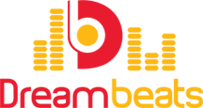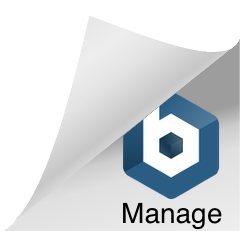Content
If your total revenue is $20,000 with the same $15,000 in expenses, you have a profit. The burn rate measures how quickly ledger account a company is spending money. It’s often expressed in dollars per month, though it can be expressed in any timeframe.
If you know your burn rate, you’re better prepared for long-term success. If your burn rate shows a rapidly diminishing runway, you may decide to put off large cash outlays, for example. Knowing your burn rate may be a motivator to cut your expenses or find ways to rapidly increase your revenue to cover the difference. Since the business has been dry, Ding Dong’s sales for the quarter were just $30,000. The net burn rate measures cash flow and accounts for revenue. The burn rate doesn’t breakdown expenses and qualify them individually, either. A business owner might know their burn rate is troubling, but that won’t help them figure out where spending could be cut, how profits could be increased, or where alternate funding could be found.
From this perspective, it is a measure of the negative cash flow and an indicator for the self-sustainment of the company. During that period of cash consumption, it is critcal to keep a close eye on cash balance and burn rate and cash out date.
Once a startup begins generating positive cash flow, burn rate is usually shelved. A company can reduce its gross burn rate or the total amount of operating costs it has each month by producing revenue or by cutting costs, such as reducing staff or seeking cheaper means of production.
Free cash flow represents the cash a company can generate after accounting for capital expenditures needed to maintain or maximize its asset base. Let’s consider the cash flows of a hypothetical company—Super Biosciences. For starters, the net cash from operating activities was negative $5.75 million for the first nine months of the year. This means the core business operations burned cash at a rate of about $640,000 per month, largely thanks to continued operating losses. Net burn rate is the difference between cash inflows and outflows that occur per month for a business. Gross burn rate is simply the cash expense incurred on a monthly basis.
How Do You Reduce Your Cash Burn Rate?
Both a simple and detailed form regarding your business’ financial performance are provided by this calculator. Uncover the meaning of burn rate and how to calculate your burn rate, and ways you can improve your long-term cash flows. However, because cash revenue is a rather unpredictable value, especially for young companies, it is better to look at the cash gross burning rate as a measure of how well things are being handled. Businesses can increase sales by running promotions or offering discounts to spur purchases. They may also sell excess inventory or try to speed collections. A startup without market-ready products may begin selling consulting services or soliciting pre-payment for later delivery of finished goods, among other techniques.
- Planning the amount of money your startup will need without adding in as large a safety margin as possible is not only shortsighted but imprudent.
- Since the cash burn is also $10,000, we can easily say that Ding Dong is not in a very good position.
- Many technology and biotech companies face years of living on their bank balances.
- That depends on how long you think it will take before you secure more funding or start earning sufficient revenue to offset expenses.
- To calculate your runway, divide your burn rate by the total cash reserves.
- The burn rate measures how quickly a company is spending money.
For instance, you can calculate and document different kinds of expenses, such as personnel, rent, office supplies, marketing expenses and travel. As such, it will allow you to highlight areas where cash may be being wasted or overspent.
Encourage Cash Sales
If in the bank, a company currently has $1, and it goes through $100,000 per month, its burn rate is $100,000 and its runway is 10 months. To achieve capital efficiency, it’s important to lower your burn rate without significantly slowing business growth. Start by reviewing your discretionary spending—items that can be easily cut or reduced, such as travel, marketing spend, software, external consulting, and meals/snacks.
Those rounds may no longer happen, or at the very least are likely to be delayed. Knowing how much cash you’ll need will be an ongoing evaluation as you build the business.
The tool will calculate the average consumption rate, also referred to as a “burn rate,” for each type of PPE entered in the spreadsheet. This information can then be used to estimate how long the remaining supply of PPE will last, based on the average consumption rate. Using the calculator can help your facility make order projections for future needs. The PPE Burn Rate Calculator excel iconmay be preferrable for smaller companies. Burn rate is typically calculated for new businesses as a way of measuring how long the company has to either become profitable or find new funding. Learn the two different kinds of burn rates, how they’re calculated, and why it matters to both businesses and investors. Typically, an investor may negotiate a clause in a financing deal to reduce staff or compensation if a company is experiencing a high burn rate.
However, for startups with an eye on the future and a desire to seek more funding, knowing your burn rate is essential to establishing your spending strategy and reaching your goals. Burn rate refers to the rate at which a company spends its supply of cash over time. It’s the rate of negative cash flow, usually quoted as a monthly rate. In some crisis situations, the burn rate might be measured in weeks or even days. Analysis of cash consumption tells investors whether a company is self-sustaining, and signals the need for future financing. Burn rate is the term used to describe how fast a company is spending money. Often, burn rate is calculated per month, but it can be adjusted for any period.
Burn Rate For A Start
Always be aware that your company’s survival is closely correlated to your cash runway. When you run a startup, the money you have ultimately matters more than any money you’ll make. A financial strategy that works for one startup may be a major misstep for another. Consider framing your burn rate in terms of growth and deepening your awareness by drilling down into specific metrics such as burn per new hire or burn per department.
Those businesses not in the process of seeking venture capital funding should still monitor burn rate if they find themselves operating at a loss. Burn rate, along with cash runway, can help these businesses understand how long they can continue to operate at a loss before shutting their doors. In other words, it sets the stakes for how urgently they need to find a solution and increase revenue. To calculate your own burn rate, you’ll want to look at your cash balances over a period of time, which are best found on past cash flow statements. If you want to see your burn rate based on last quarter’s spending, for example, input the cash balance you had at the beginning of the quarter, the balance at the end of the quarter, and the number of months .
However, mature companies shouldn’t ignore it, despite their stable revenue stream. A burn rate check once in a while may prevent unwanted trouble. Let’s say that at the start of the last quarter you had a cash reserve of 100K in US Dollars. retained earnings We divide 60K by 3 and we obtain a burning rate of 20K per month. If we assume that you also had some cash revenue of, say 30K, your loss will be of only 30K. Divided by 3 , you will obtain a cash net burning rate of 10K per month.
Brad Feld coined the “40% Rule” for a healthy SaaS company, where “net profit” in cash terms (net burn rate as a % of cash sales) and growth rate should both add up to 40%. Following this rule, a 20% growth rate and positive 20% net burn rate would be acceptable, as would a 40% growth rate and 0% net burn or 100% growth rate and negative 60% burn rate. As we have discussed, founders and investors are equally interested in measuring the actual burn rate and comparing it to forecasted data provided at the prior investment round. This is because it gives an indication of the company’s life expectancy and its ability to control spending as it grows.
Using accounting software can help you track those expenses and revenue to more easily calculate burn rate and other metrics. Improve your cash flow with invoices, payments, and expense tracking. Your net burn rate is the difference between the revenue you take in and your expenses. This calculation comes in handy if your company already generates some revenue, because it can be a gauge to show how close your revenue is to covering your expenses. If your total expenses are $15,000 and total revenue is $8,000 for a certain period, your net burn is $7,000.
Because you are using cash basis to determine cash burn rate, your burn rate is more likely to experience notable fluctuations from one month to the next. For instance, if a credit card payment is made in February for expenses generated in January, your cash burn for January will be significantly lower and cash burn for February significantly higher. This calculation can be used to determine your average burn rate across cash burn, gross burn or net burn; just swap out the figures accordingly. ‘Runway’ refers to the amount of time a company has before it runs out of cash. If your net burn rate is $10,000 a month and you have $100,000 in the bank, you’ve got 10 months to start generating positive cash flow.
As a result, managing your headcount is often the quickest way to get your burn rate under control. But if you find that you’ve purchased subscriptions to tools your team isn’t using or that don’t move the needle enough, that could be Cash Burn Rate Calculator a place to cut costs. If you’d like to see a graph of your runway, the calculator above will generate that for you. This is helpful if you want to know how close you are to recouping expenses just from revenue-generating activities.
As a result, the net cash flow from investing was also negative, to the tune of about $1.9 million. The net cash burned by operations and investing activities amounted to over $7.65 million—a burn rate of roughly $800,000 per month. Burn rate is mainly an issue for startup companies that are typically unprofitable in their early stages and are usually in high growth industries. It may take years for a company to generate profit from its sales or revenue and as a result, will need an adequate supply of cash on hand to meet expenses. Many technology and biotech companies face years of living on their bank balances. One aspect to consider under the cash basis, however, is the timing of “cash-ins” and “cash-outs” and whether reporting a monthly burn rate makes sense.
Author: Mark Kennedy




